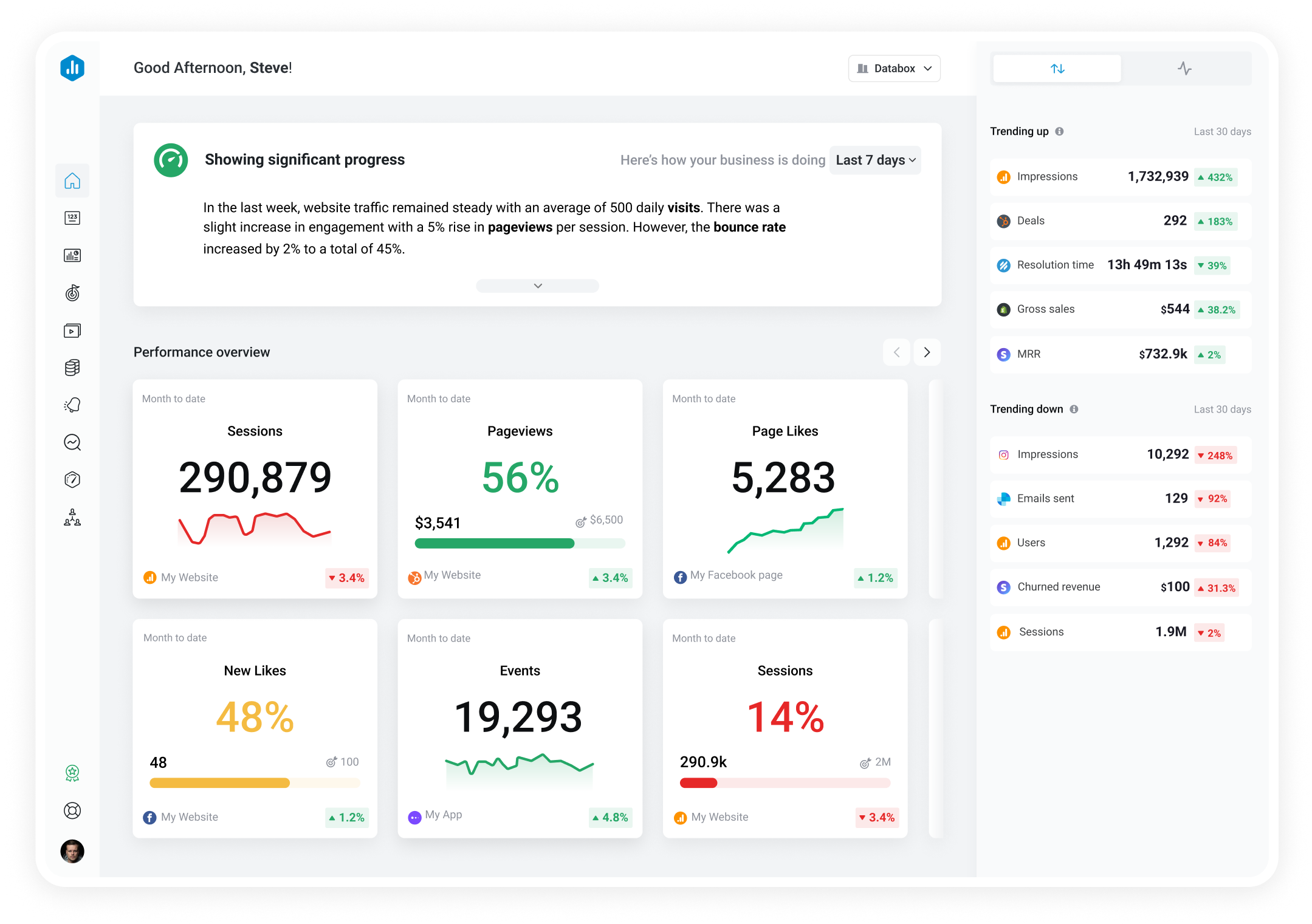Track all of your key business metrics from one screen
GET STARTED
 QuickBooks
Assets (Cash)
QuickBooks
Assets (Cash) Assets in QuickBooks refer to the resources that a company owns and can use to generate revenue. These include cash, accounts receivable, inventory, and property. Assets are important because they show a company's financial strength and ability to generate income.
With Databox you can track all your metrics from various data sources in one place.

Used to show a simple Metric or to draw attention to one key number.
Databox is a business analytics software that allows you to track and visualize your most important metrics from any data source in one centralized platform.
To track Assets (Cash) using Databox, follow these steps:
 Goals
Goals Scorecards
Scorecards Metric Digest
Metric Digest Metric Builder
Metric Builder Data Calculations
Data Calculations Performance Screen
Performance ScreenThe QuickBooks Balance Sheet Overview dashboard provides a real-time snapshot of assets, liabilities, and equity. It includes key financial metrics like liquidity, efficiency, solvency. Ideal for monitoring financial stability and performance.

Stay on top of your company’s financial health with real-time P&L, balance sheet, and cash flow insights from QuickBooks. Built for business leaders, finance teams, and stakeholders to support smarter planning and decision-making.

